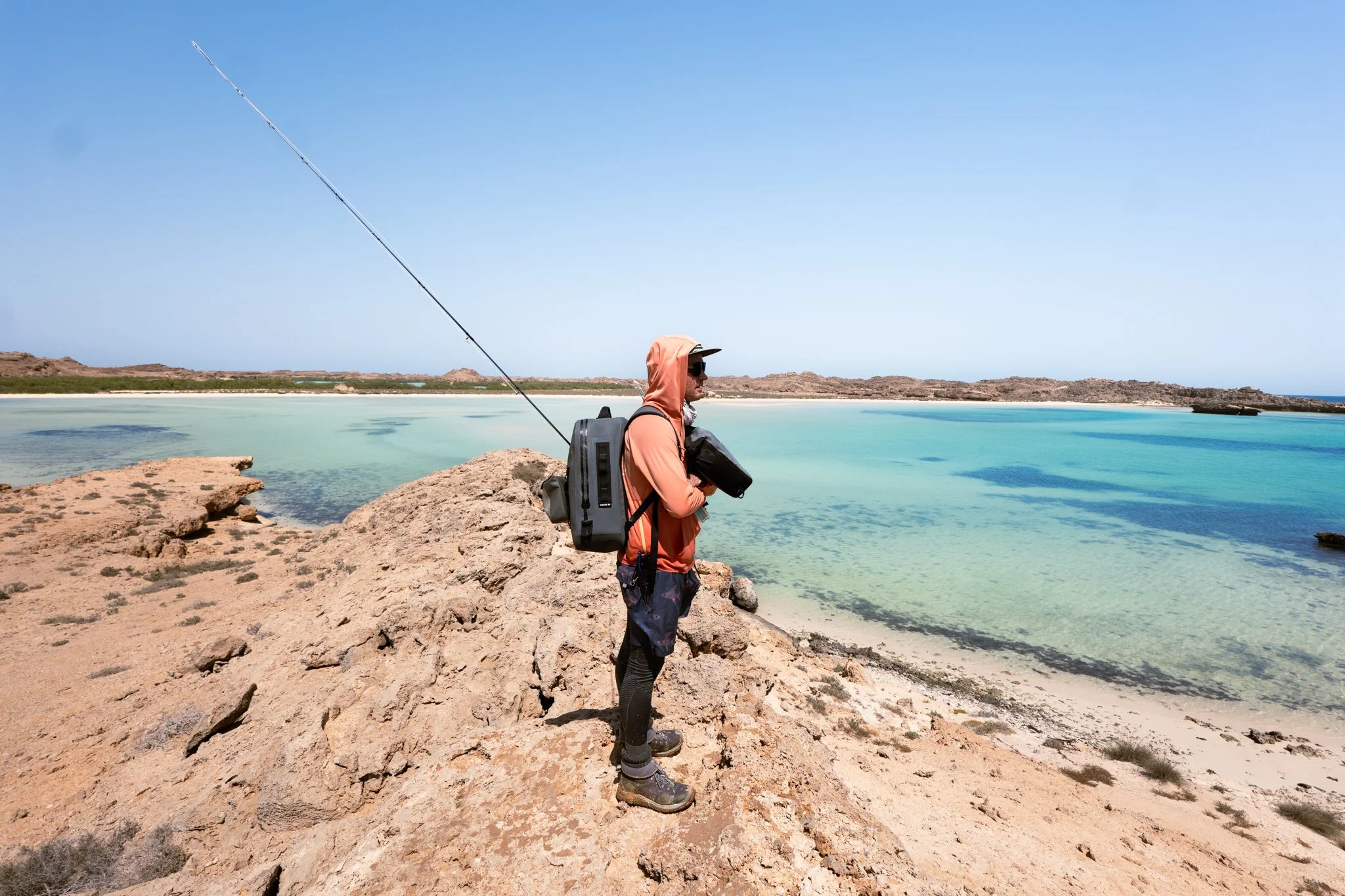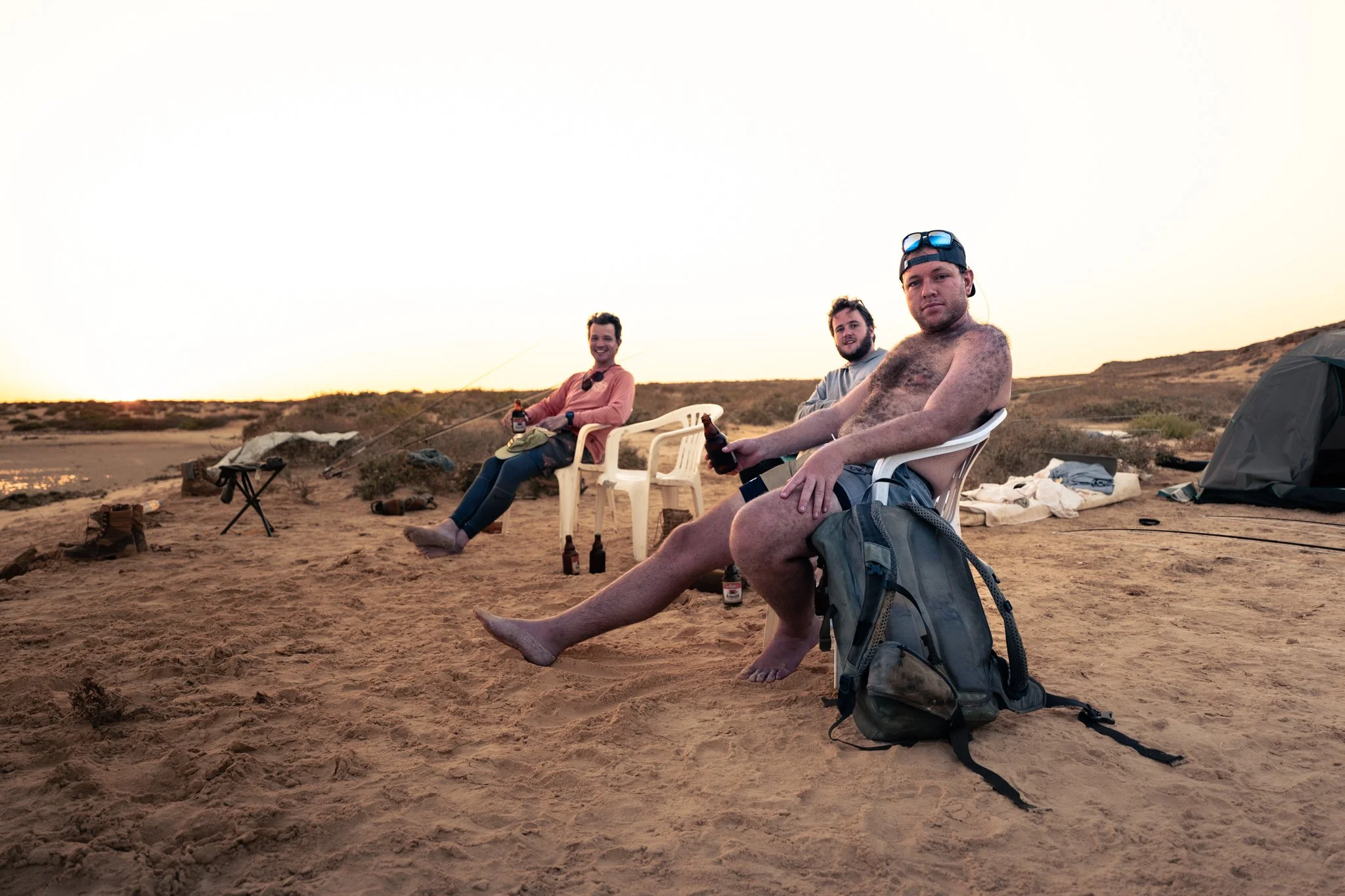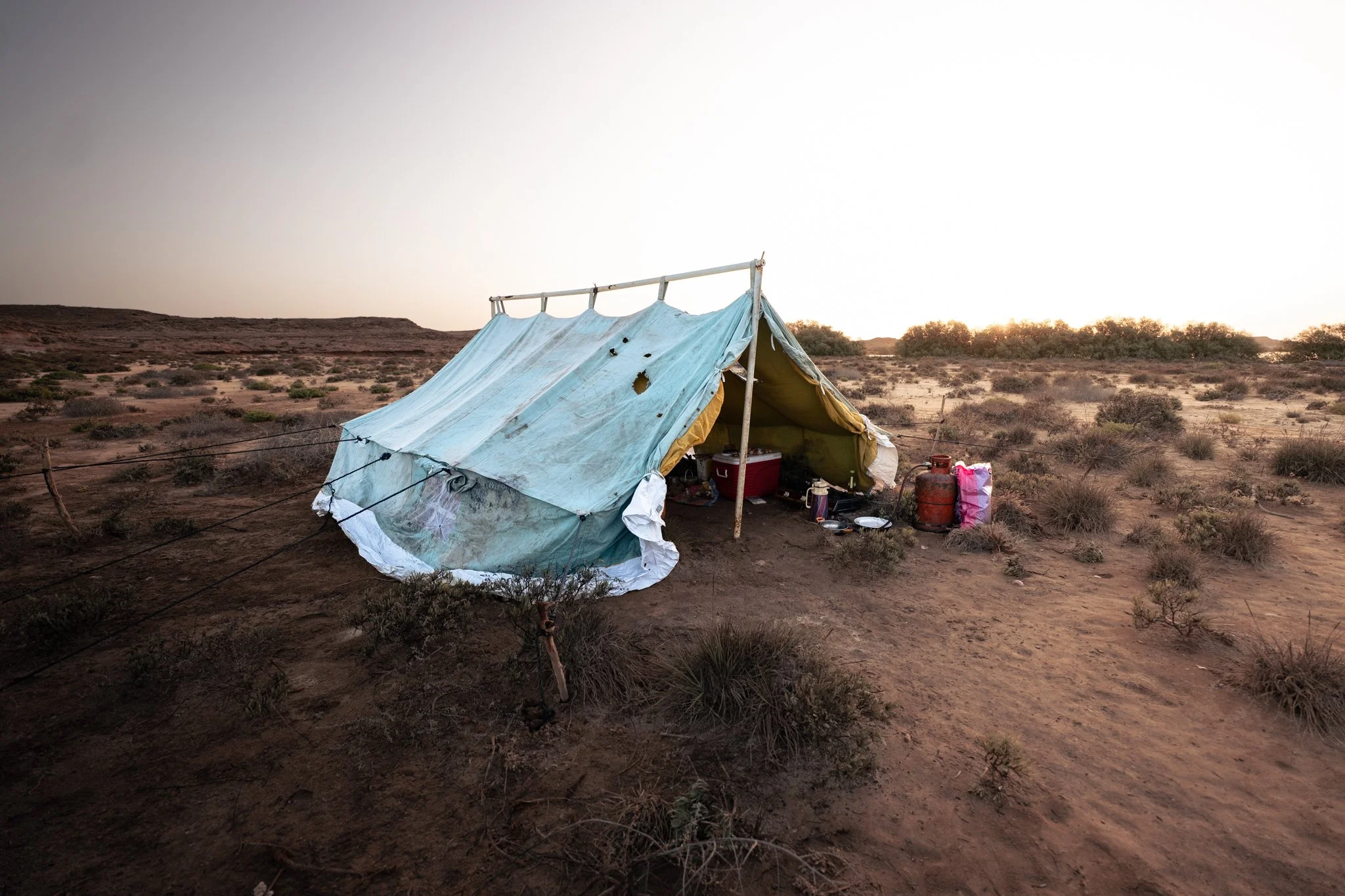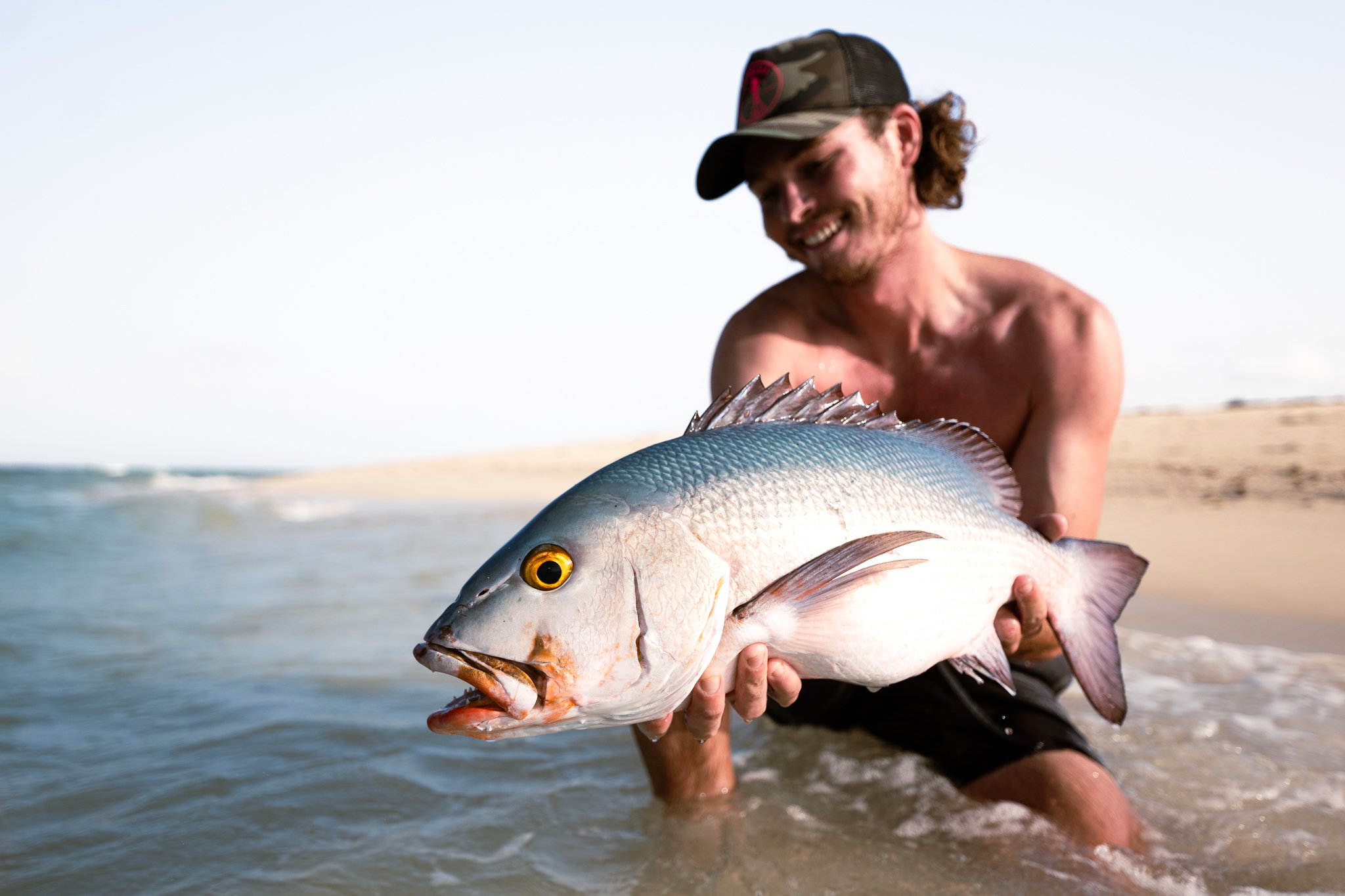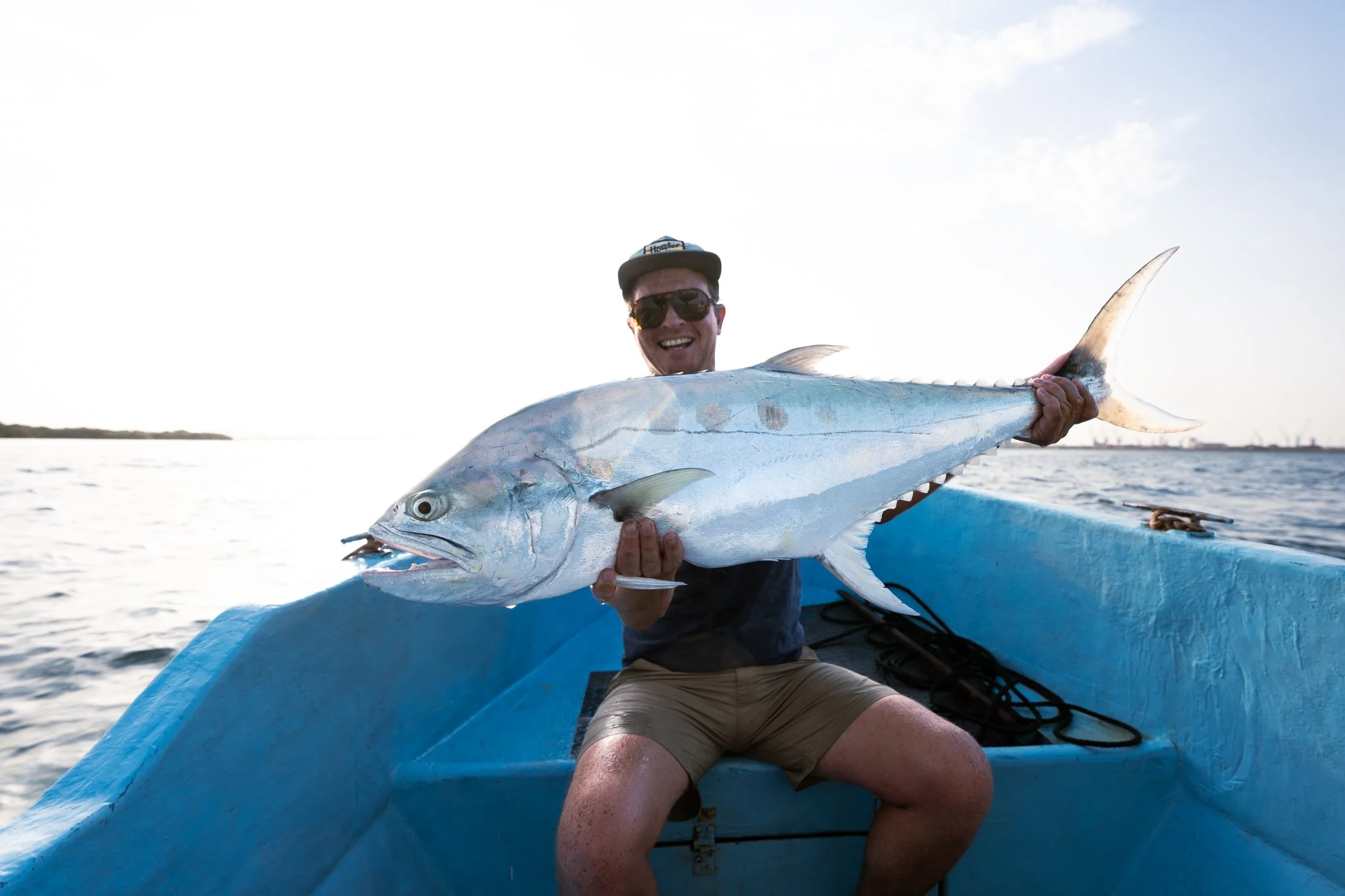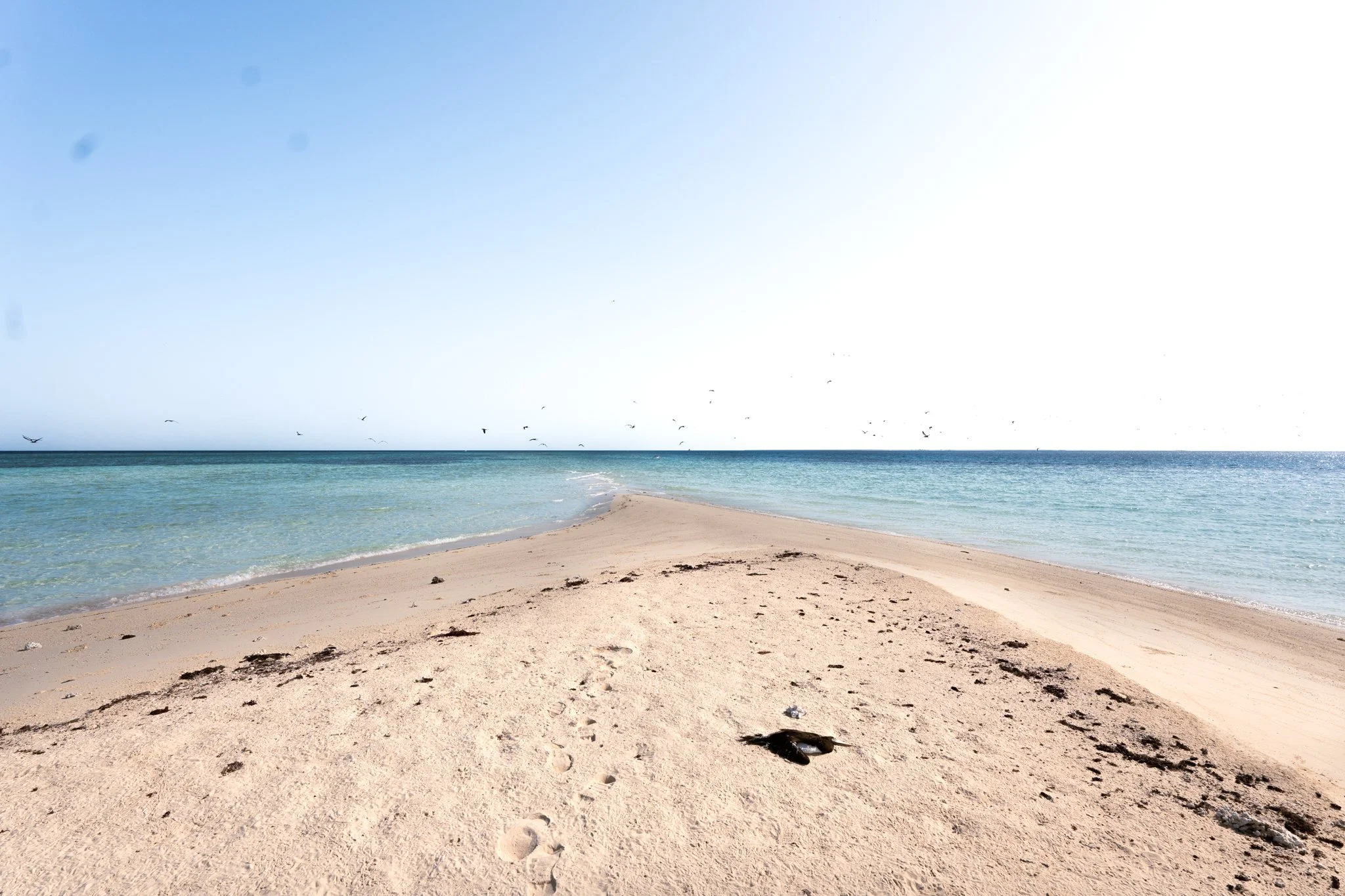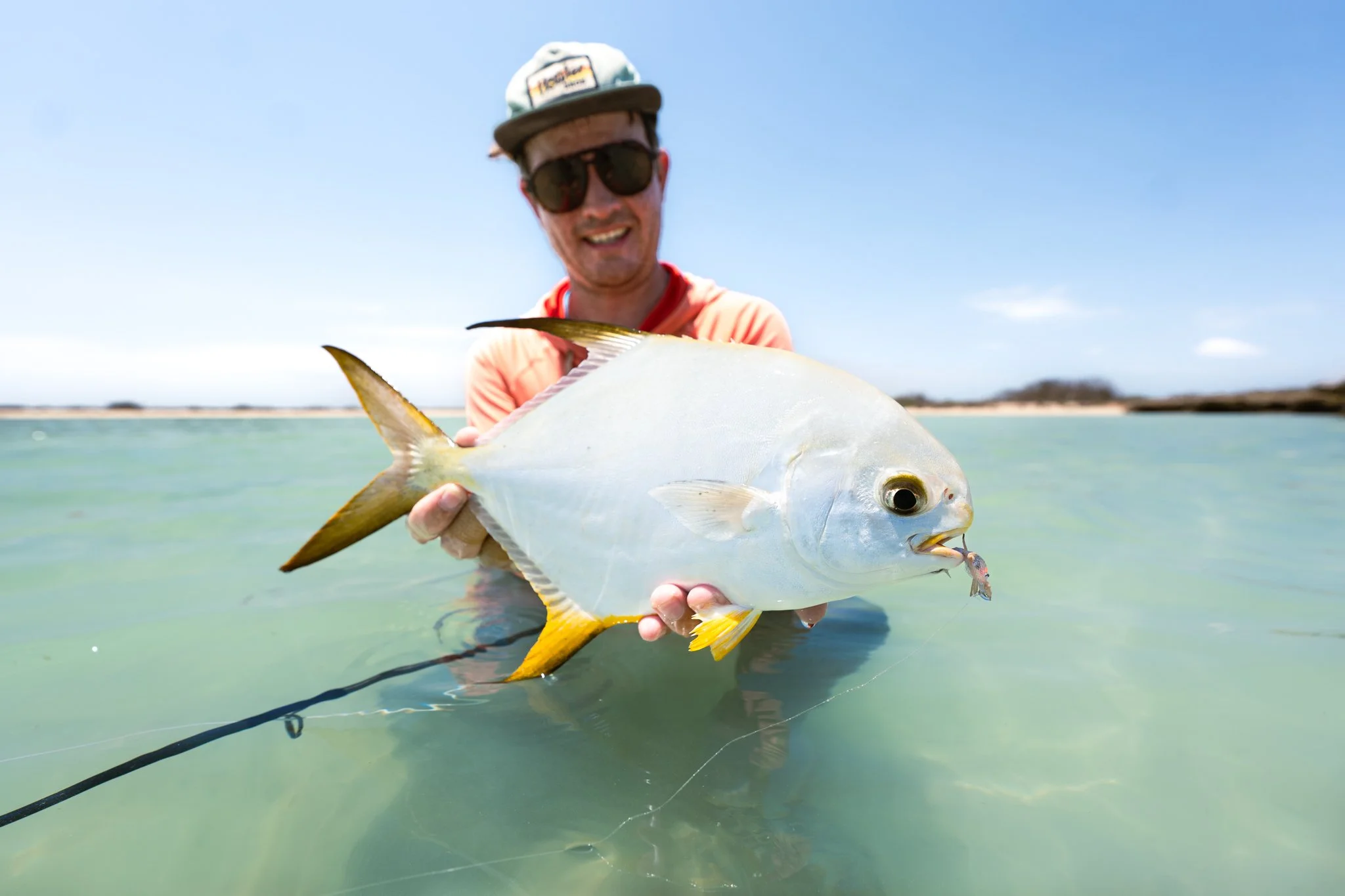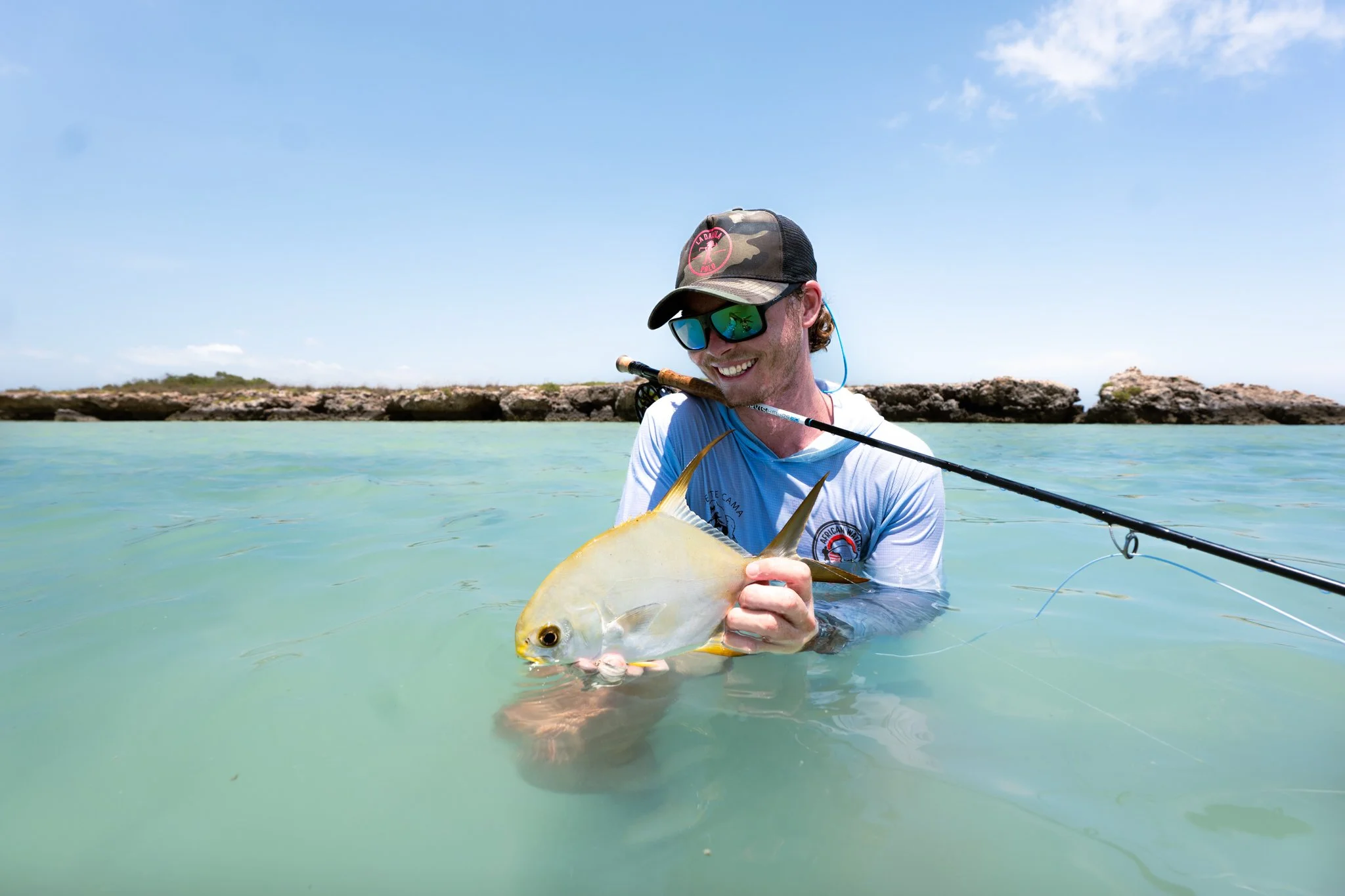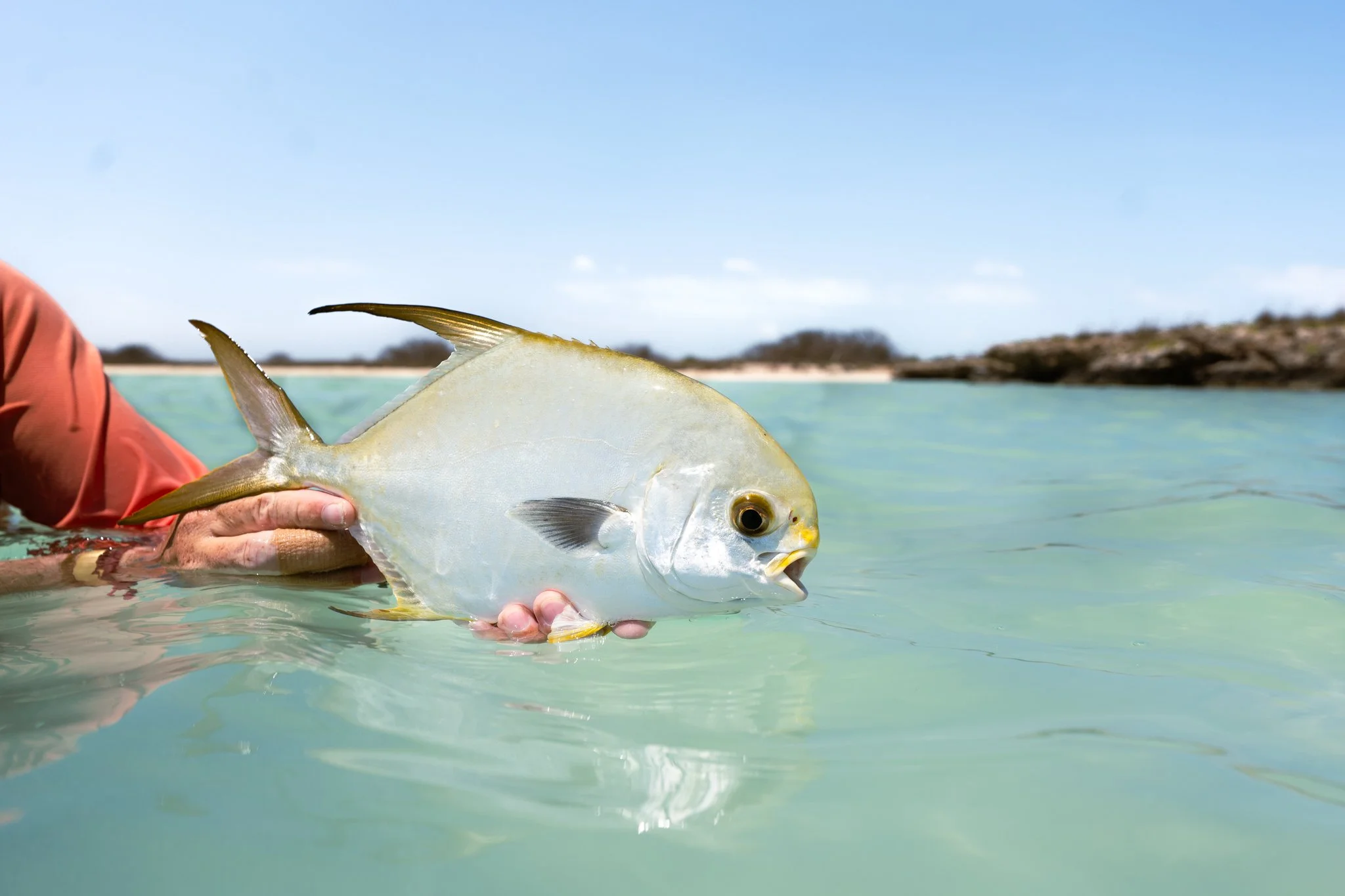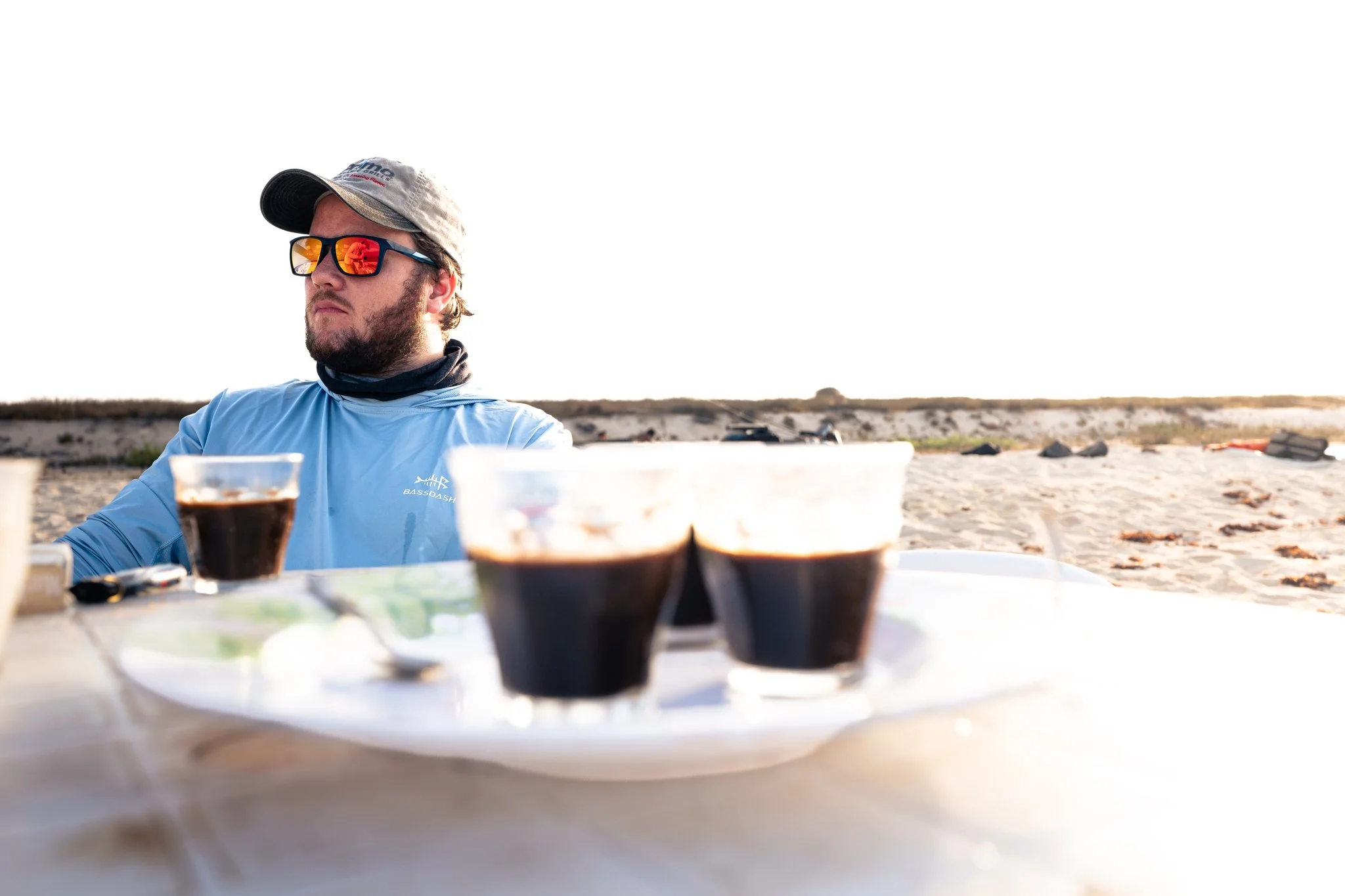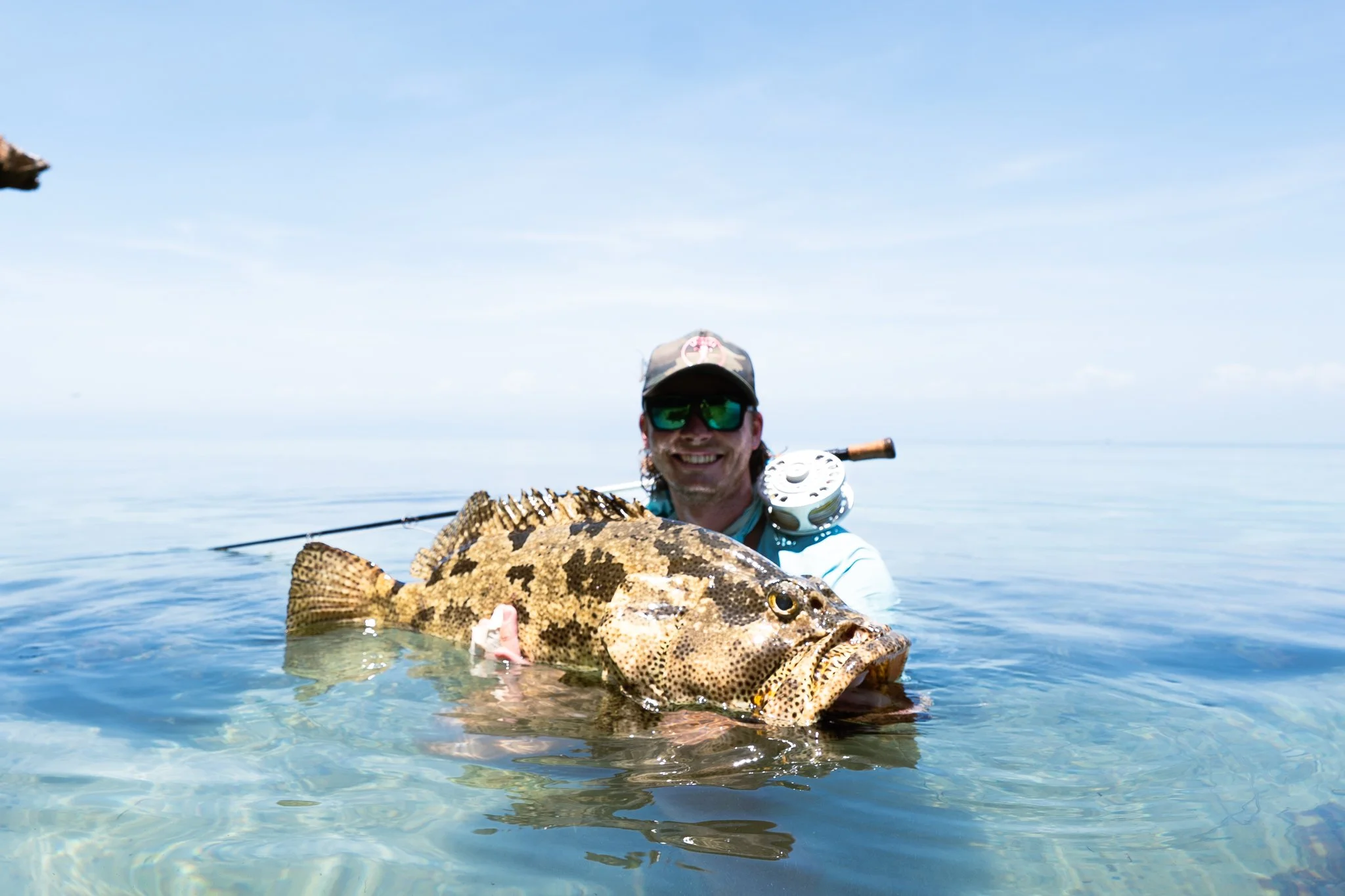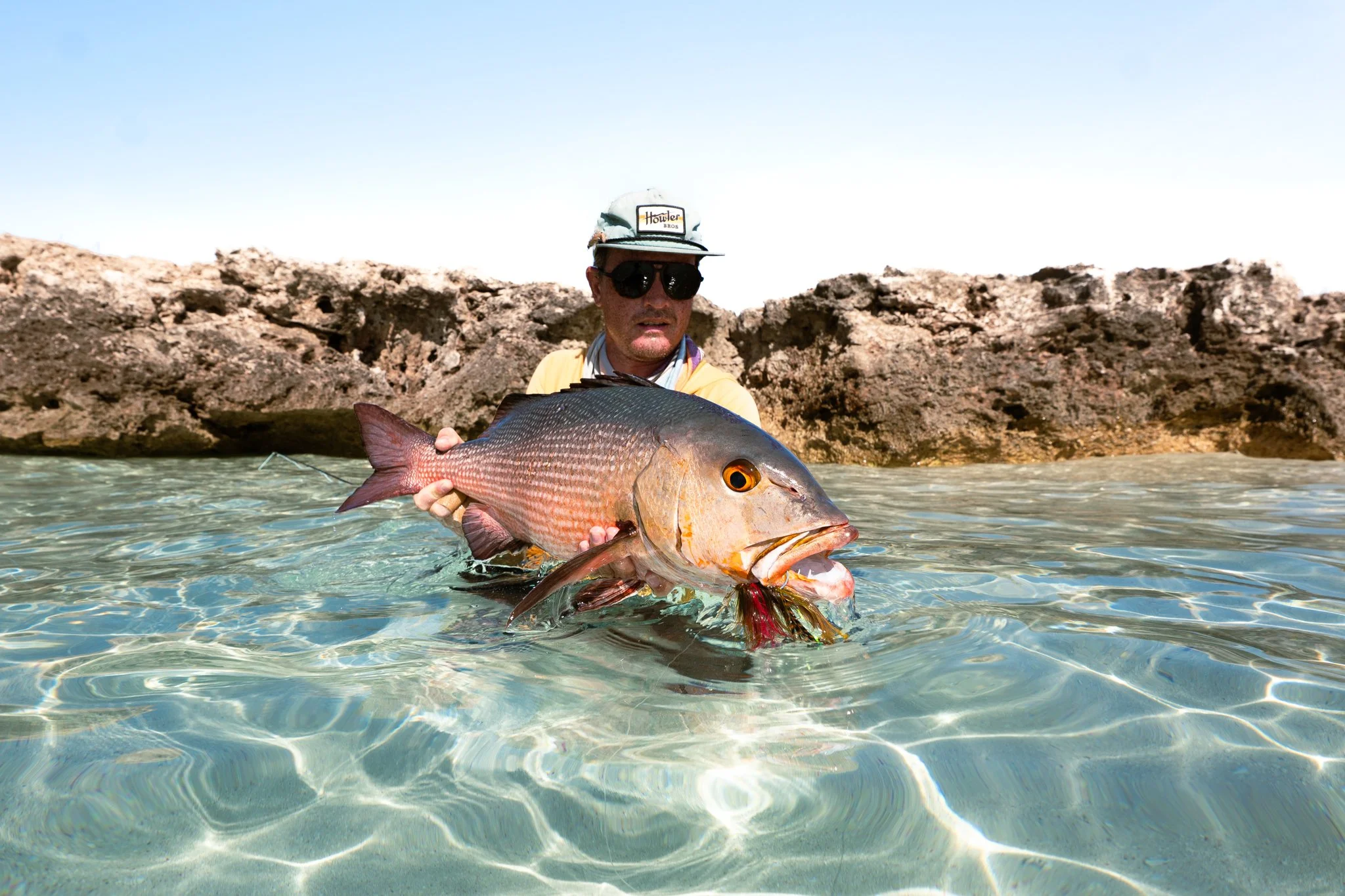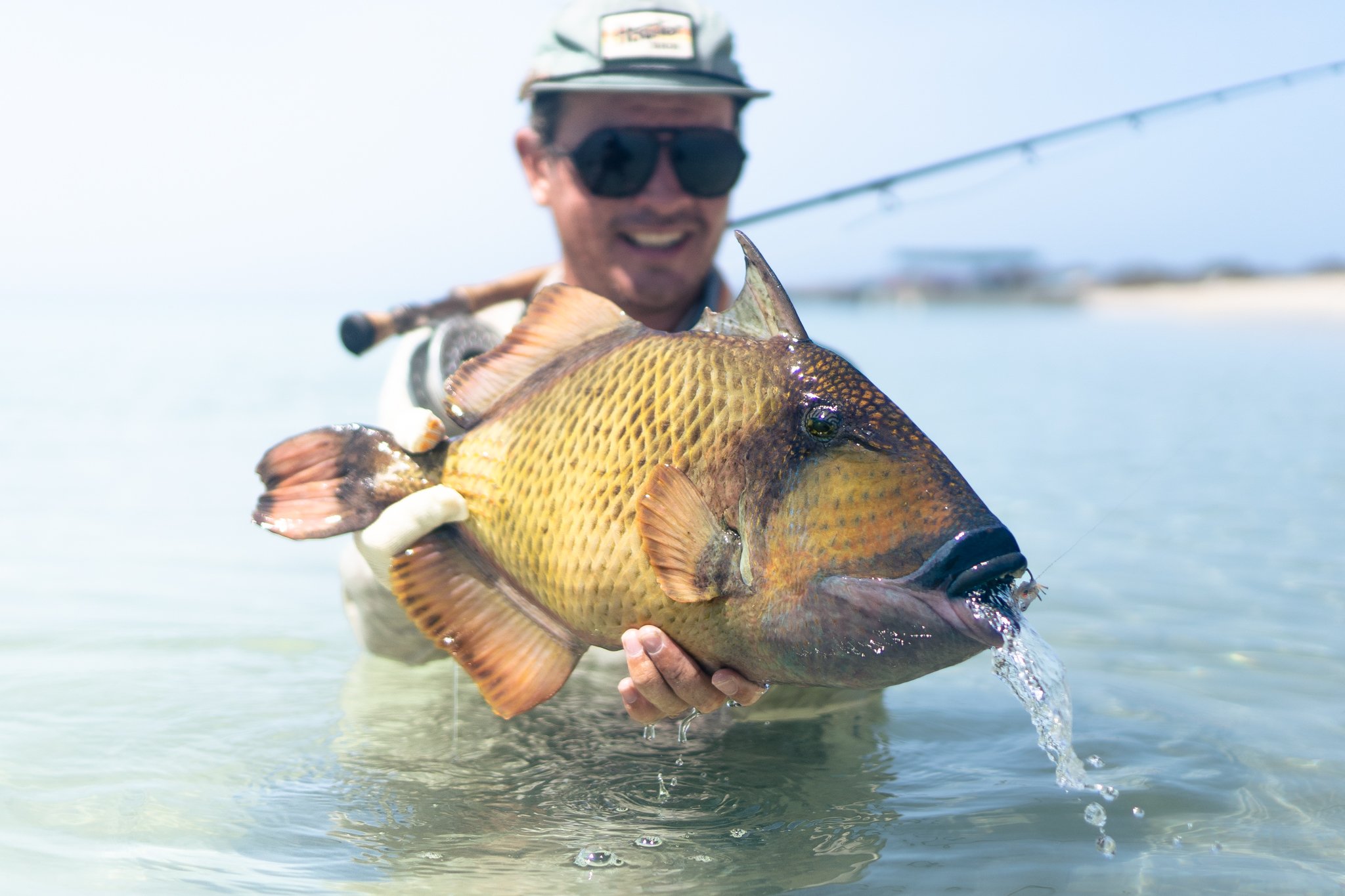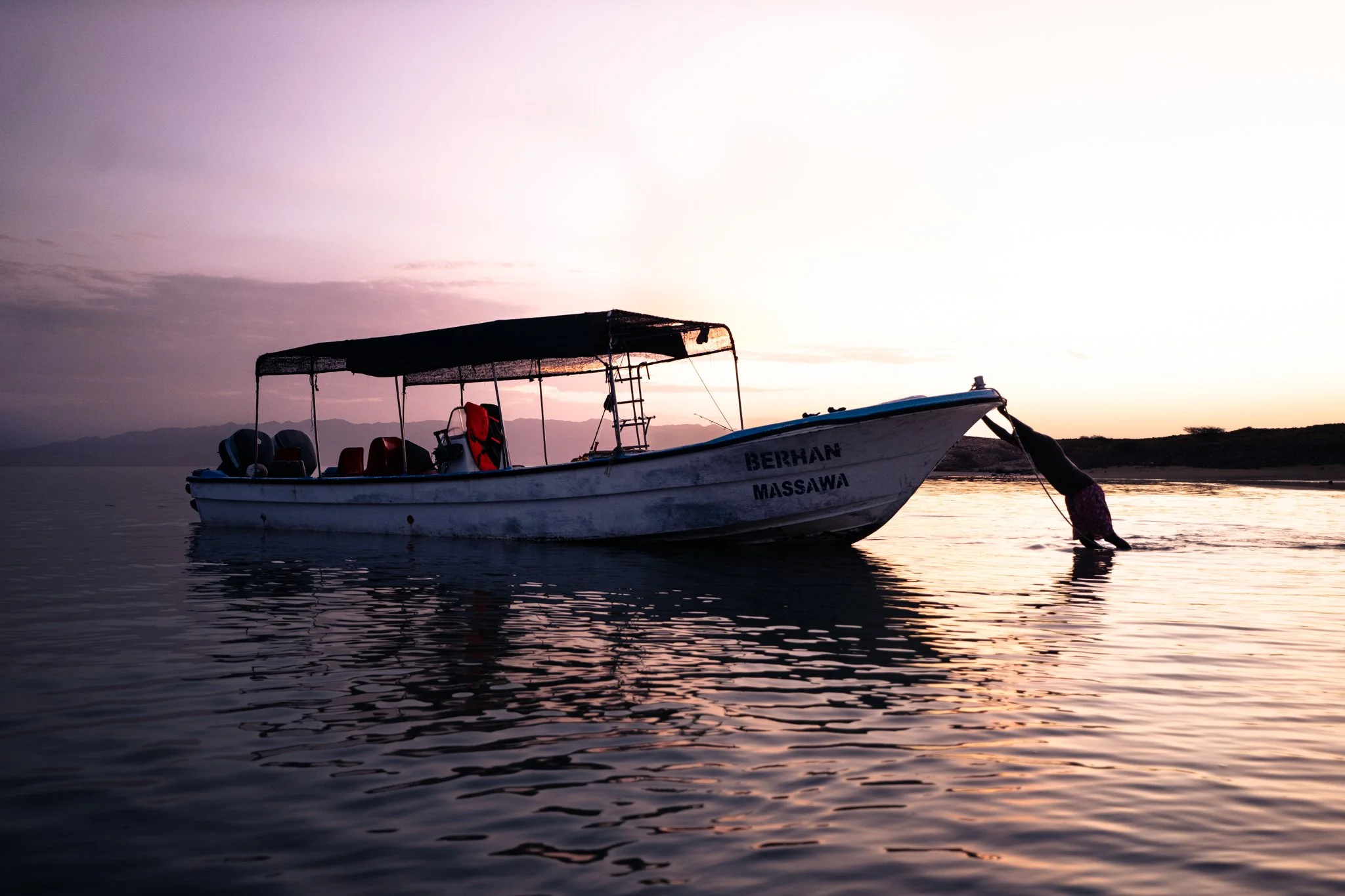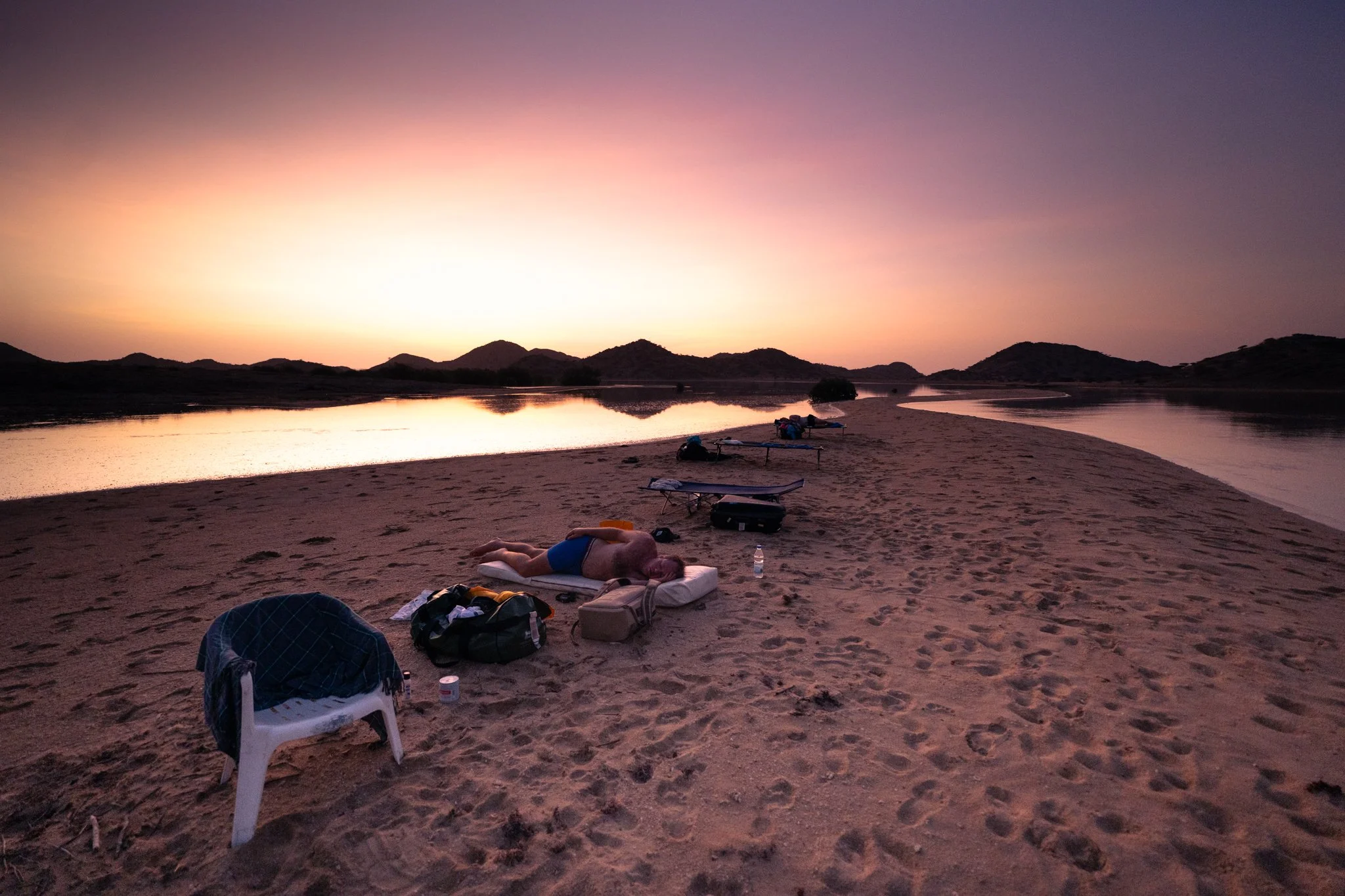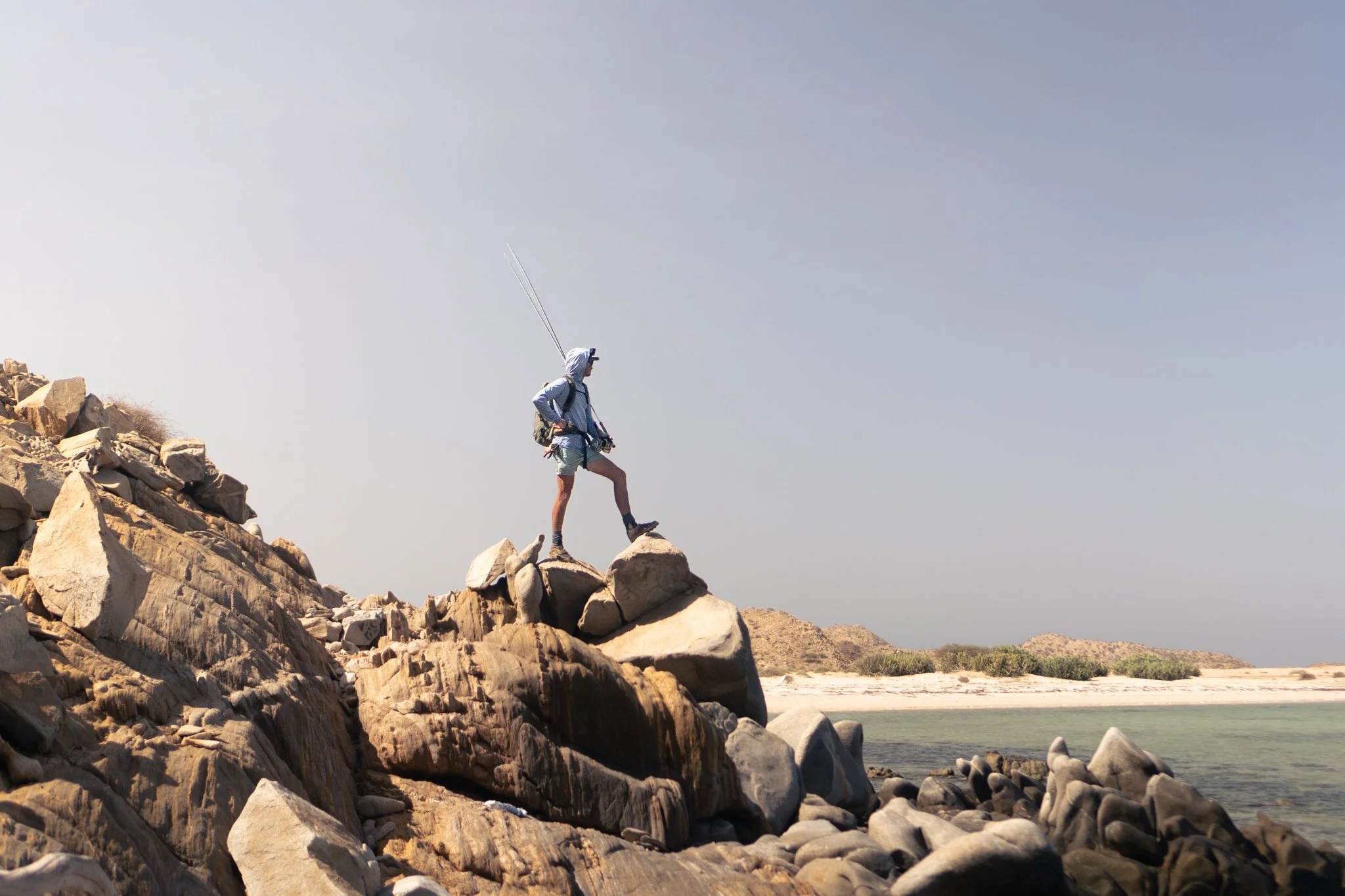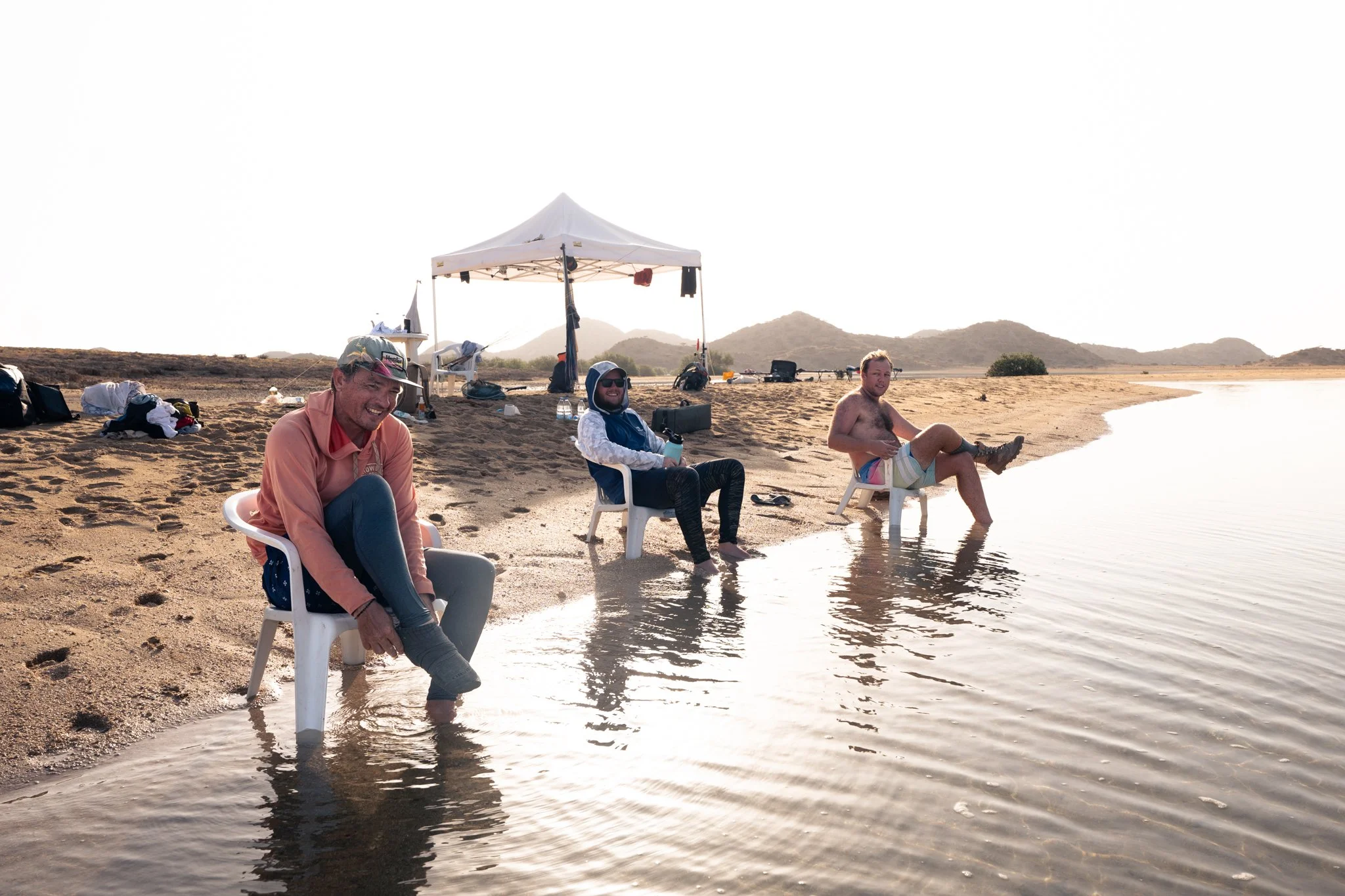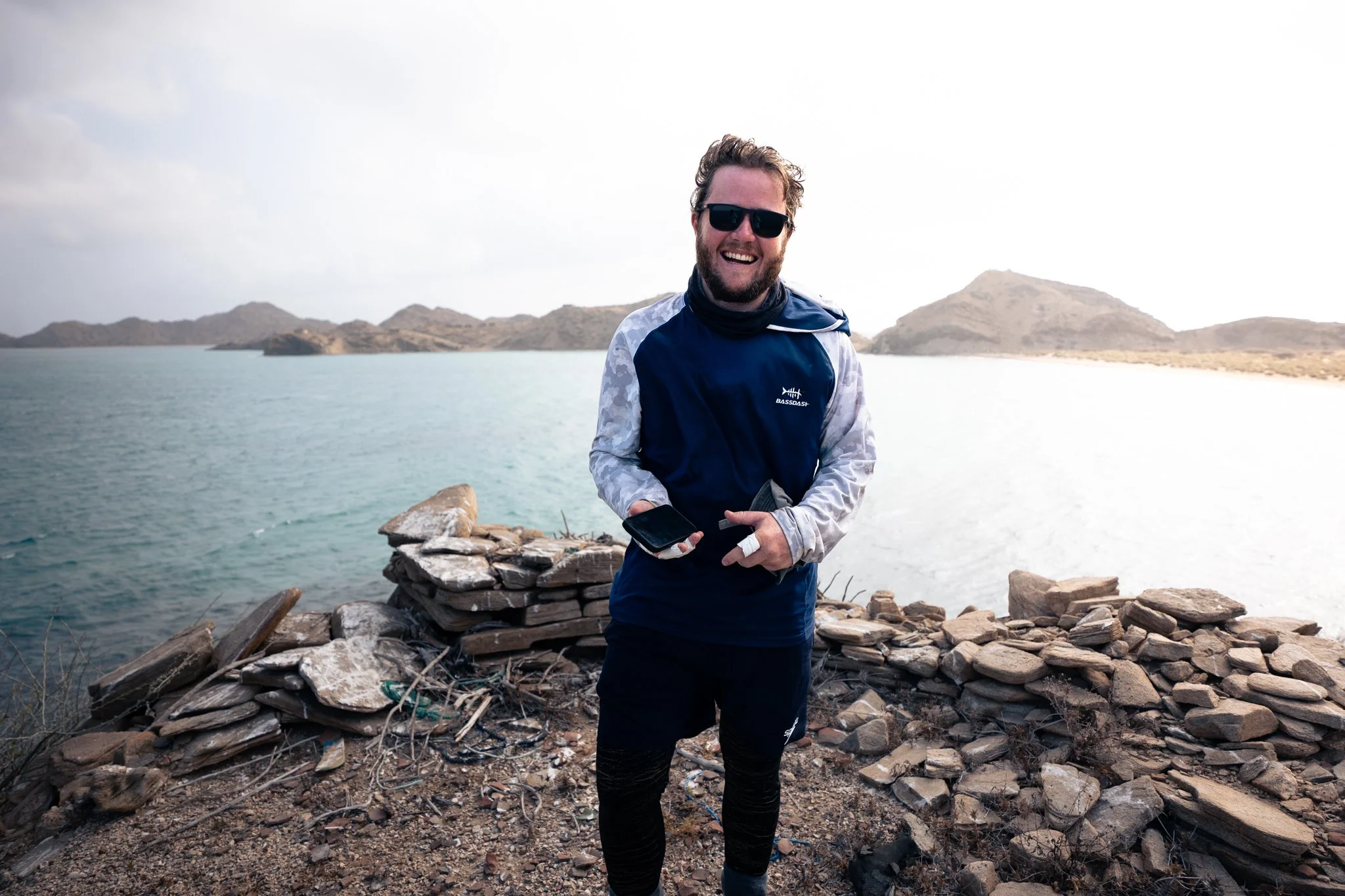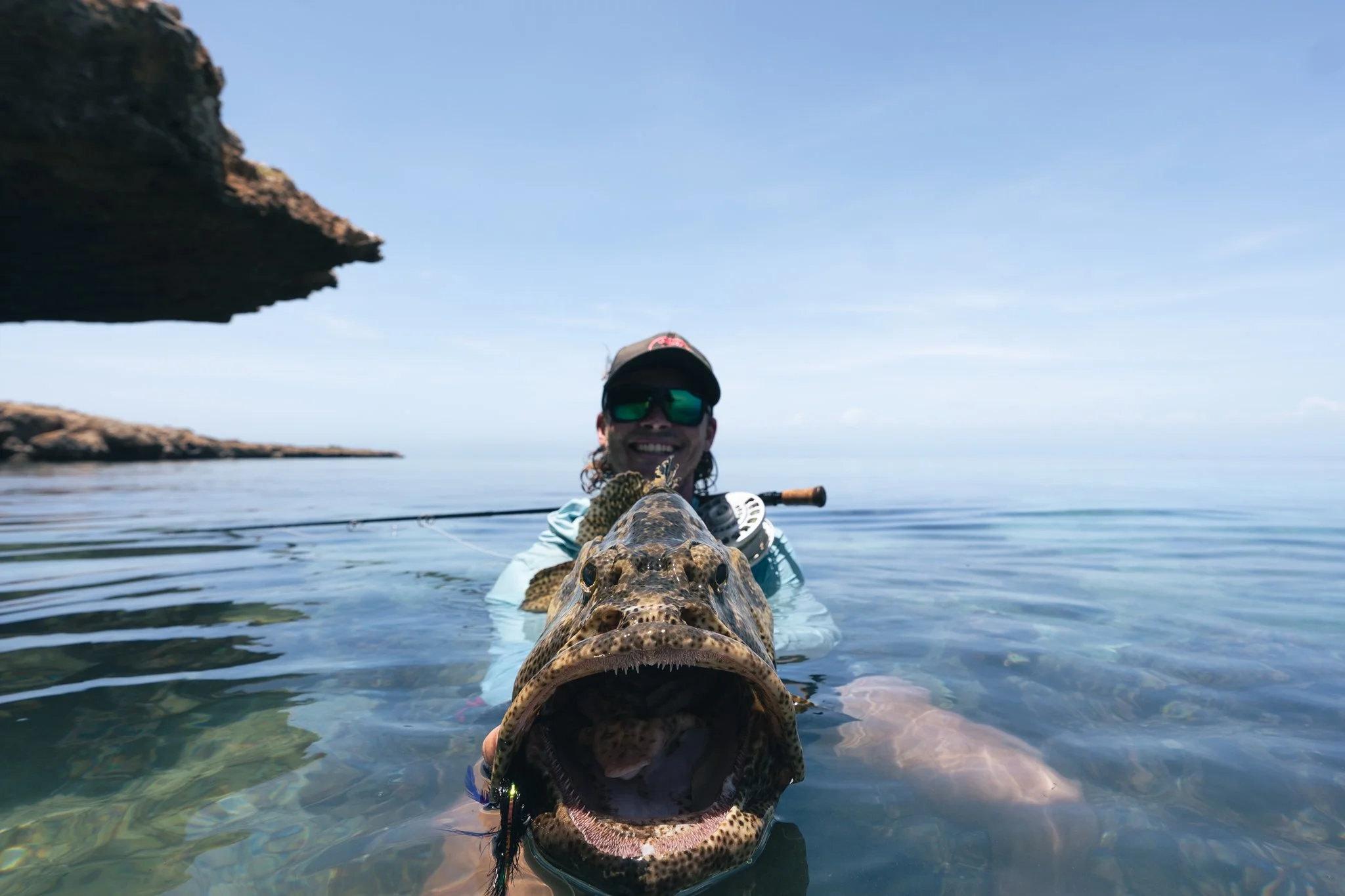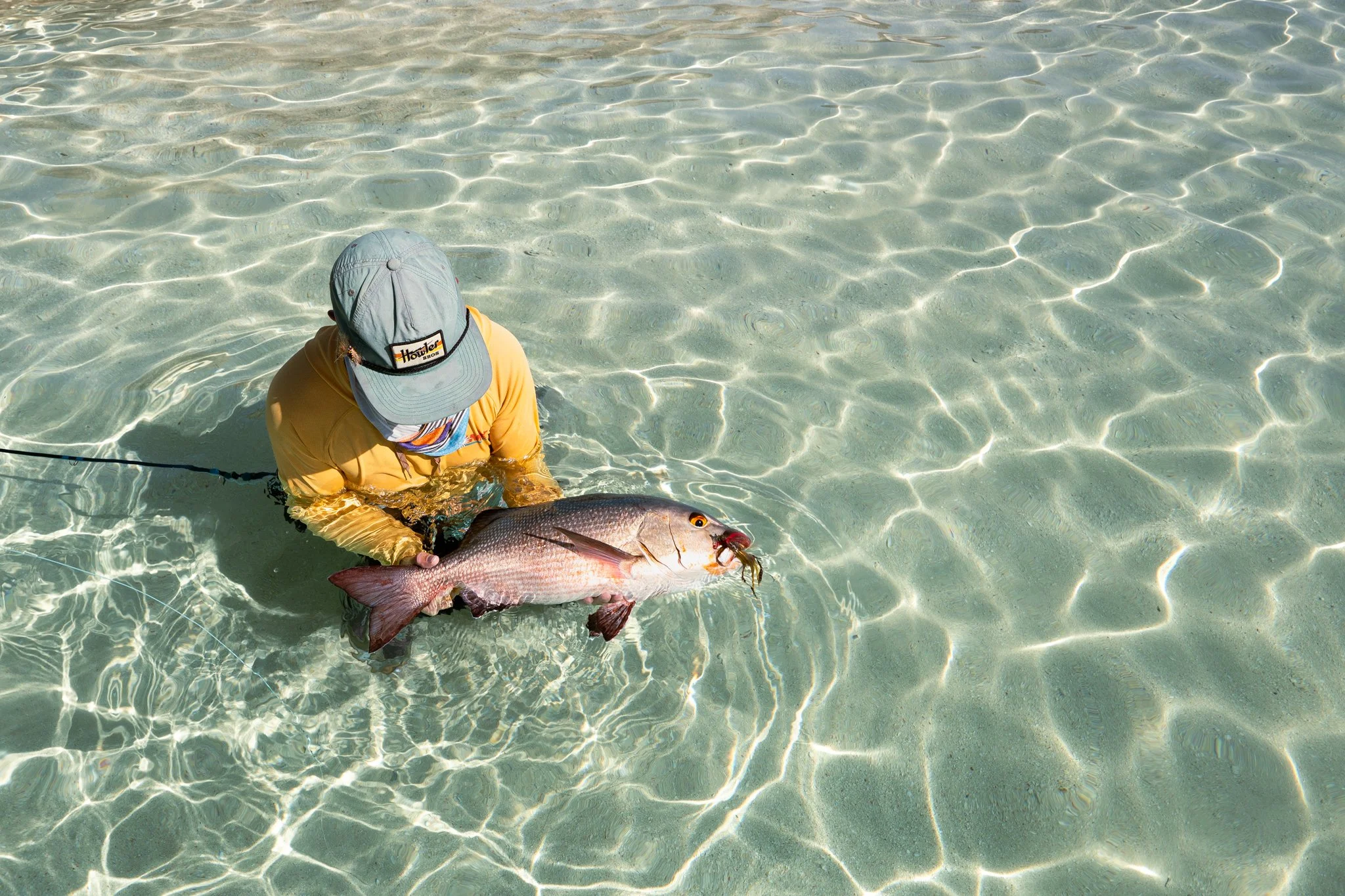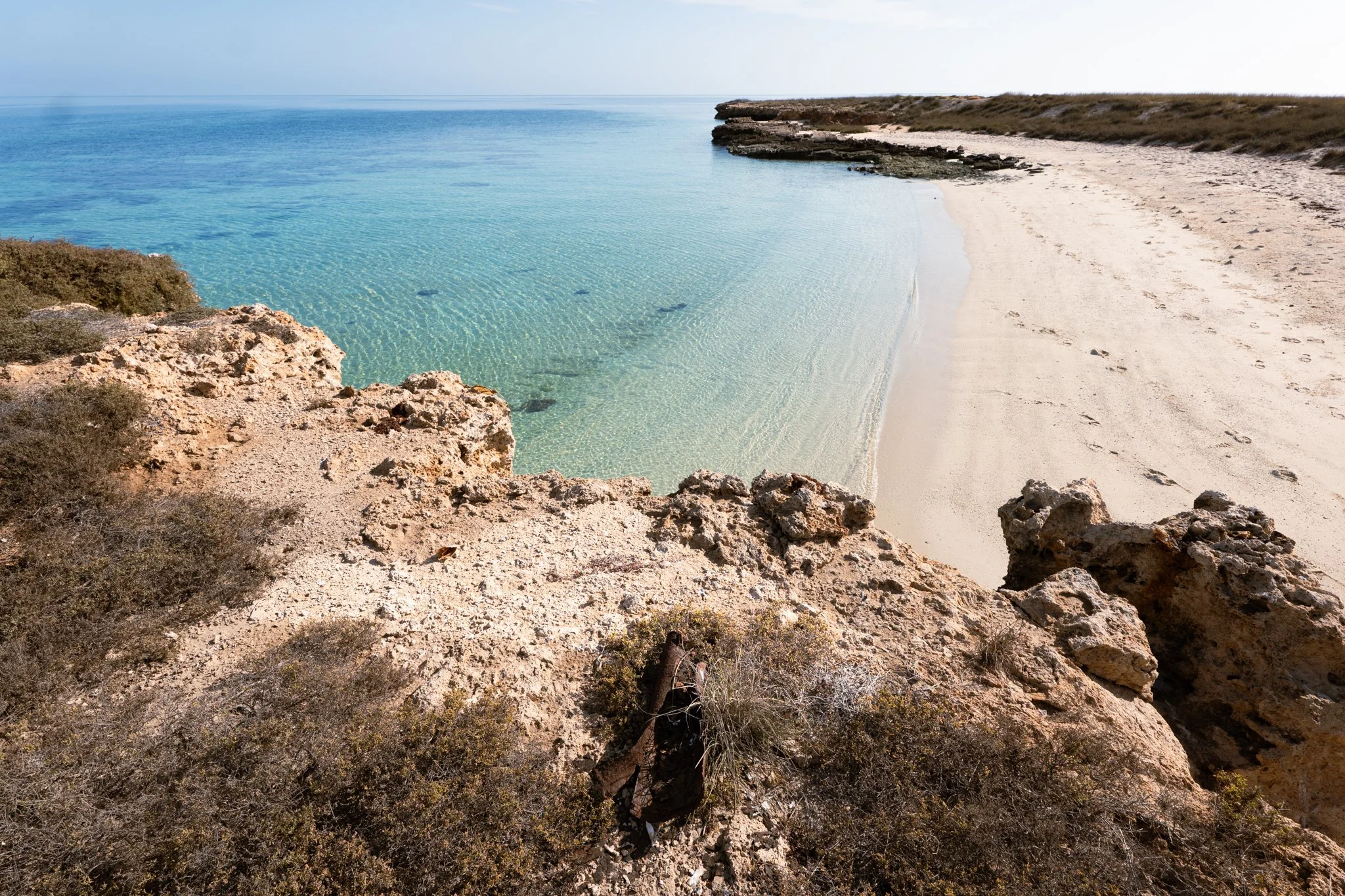The Axum Flats: Exploratory Expedition Journal
Exploratory fly fishing in the red sea – remote archipelagos, untouched flats, and the hunt for permit, GTs and other reef species on the fly.
The Beginning
In May 2024, I set off with three close friends to explore a remote archipelago, an untouched chain of islands where only three are semi-inhabited and most have never felt a fly line. It was, on paper, the sort of fishery every destination angler dreams of: vast flats, lagoons, sand bars, drop offs, and the great unknown.
But to get here, let’s go back.
Exploration is hardwired into us. It’s what pushed people to colonise the far corners of the earth. That taste of risk, of not knowing what might be found, has been something I’ve chased for as long as I can remember.
Back at uni, I spent years poring over maps online, searching for places where man’s hand had barely touched the marine environment. By default, the best fishing lies where people don’t, and those places are never easy to reach. This archipelago kept pulling me back. Remote. Sparse population. Logistical headaches. Perfect.
It took years of unanswered emails, embassy doors closed in my face, phone calls lost in bureaucratic voids. Finally, a reply. A simple yes: permits would be granted, we could go.
Now all I needed were a few mad souls to join me. Luckily, those were never more than a phone call away.
Arrival in Asmara
We boarded the flight from Addis Ababa to Asmara with anticipation high. The unknown ahead was disguised by long layovers and airport chairs, but landing in Asmara pulled the veil back.
Asmara is one of Africa’s hidden gems. A time capsule of architecture, “Little Rome” with wide boulevards, coffee shops spilling rich aromas, red and white tablecloths on street corners, and impeccably kept pavements. Later we learned it’s customary: each morning the residents clean outside their homes before anything else.
Before heading to sea, we stocked up in town: water, food, fuel for the days ahead. By nightfall we descended from 8,000 feet toward the coast, Nick, aka 250ml, making us stop no fewer than twenty times to “water the flowers.” By the time we hit sea level we were a crate deep into the beers. Dinner, then beds in the Dhalak Hotel. Tomorrow, it began.
Day 1 to 3: The Outer Islands
From our research, we’d marked eight to ten islands. One, the furthest out, showed sprawling lagoons and huge sand flats on satellite images. Logistically difficult, but promising. We chose to start there, then work our way back toward port midweek for fuel.
The five hour crossing put us on its white sand beach by late afternoon. We camped at the mouth of a mangrove lagoon, a perfect base. For three days we combed it: lagoons, bays, sandbars, all seemingly untouched. Not a footprint in sight.
over the next couple of days we threw everything at it. Nick and Hugo launched an assault on conventional tackle and managed to land some really decent GT’s. Dave and I stalked the flats, hunting shadows. A small GT and a handful of mangrove jacks came my way and great to tick of landing a GT in these waters. Dave watched a big GT light up on his NYAP fly only to miss at the last moment. To see a seasoned guide who spent many many years in the Seychelles shaking verified just how big it was…
It was puzzling. The structure was perfect, the water pristine. Yet the consistency wasn’t there. Were we missing the rhythm? Or did this island keep its secrets better hidden?
Day 4: Back Toward Port
On day four we pushed back toward the inner islands, camping on one mid route. That evening, I picked up a bohar snapper as the sun dropped, a good omen.
Next morning, Dave spotted two nice GTs on the sand and laid in a cast. The fly lit them up and one ate right at the bank. Within seconds he was bent double, then slack. The loop to loop on his fly line had failed. Rod and angler left stunned.
That afternoon, we headed back to port to refuel. Supplies stowed, we took a dinghy to the mouth of the harbour with a bottle of scotch. Between laughter and dredges, Dave came tight. Line screamed, the fish pulled deep. Silver flashed, then revealed itself, a monster queenfish. We had no idea they even lived here. A welcome curveball.
Day 5: Permit on the Point
The second half of the expedition began with fresh fuel and fresher optimism. We pushed out to an island flanked by drop offs and reef. Camp made, we split directions.
I stalked a reef gap and picked off a bohar. Dave, circling the other way, met Nick who casually mentioned, “There’s a bunch of permit off that point but I am keen for a beer.” We didn’t need telling twice.
As we approached, the school materialised, two hundred plus fish circling in tight formation. While lining up, I saw a massive trigger pass through. Dave and I struck a deal: if I could get a shot at the trigger without spooking the permit, it was mine. A Hail Mary cast later and the trigger was on, only to charge straight into the only bit of coral in sight. Lost.
But the permit were still there. Dave stepped up first. One lit up on his fly and he came tight, the first Axum Flats permit on fly. Possibly the first in the entire country. Moments later it was my turn. Cast, strip, eat. My first ever permit, hands trembling as I tailed it. This is a moment I will never forget…
That afternoon turned electric. We hooked and lost multiple fish, landing a few. The school was thick, the kind of encounter that shifts entire perspectives. From theory to reality, these flats had permit. And lots of them.
Day 6: The One That Got Away
Morning rituals became habit: traditional Ethiopian coffee brewed in clay pots as the sun crested the sea. Then rods strung, boots laced.
Dave had a hunch about a section of white sand flat. Minutes later we heard him shouting. We ran half dressed, socks missing, toothbrushes in mouths. Dave stood shell shocked, rod in pieces. He’d just had a 125cm plus GT eat his fly at the bank. In the chaos the line tangled, sections of rod flying, and the fish made the drop off. Gone.
Dave shook it off like the pro he is. We pushed on. I lobbed a long cast from a rocky ledge, stripping blind. From nowhere a huge grouper exploded from coral and smashed the fly. The fight was short and brutal, but the fish hit the sand. Later Dave made amends with a solid bohar and a solid titan trigger. The day closed with bruises, cuts, but satisfaction in spades.
Day 7: Permit Ground Again
The last island loomed large, deep drop offs, a wide sand flat, and all the right hallmarks of permit country.
We dug in, walking in formation along the beach, eyes scanning. A shadow crossed the reef cut. Dave’s cast was perfect. The fish ate, battled, and turned dirty, weaving through weed and coral until, once again, the line fell limp.
We laughed. What else could we do?
My turn came. A small pod cruised left to right. I swung. The wind swung harder. My fly found the back of my head and wrapped around the 12 weight strapped to my pack. Permit vanished. The sort of comedy you only endure on exploratory trips.
That evening, as the sun dropped and the beach glowed gold, we sat silent for a while. The sheer numbers of permit we’d seen across a handful of days were staggering. This fishery was no fluke. It needed more time, more effort, and more trips.
The Axum Flats Exploratory 2025 was born right there in the sand.
Reflections
This expedition wasn’t just about catching fish. It was about proving a hunch. About setting foot on islands unseen for decades, pouring coffee over dawn flats, laughing at disasters, and watching fly lines scream into the unknown.
We found what we came for: giant trevally prowling drop offs, bohar and triggers bold as brass. Most importantly we found permit schools that could redefine an entire fishery.
The Axum Flats remain one of the most remote, least pressured saltwater fly fishing destinations on earth. And we’ve only just scratched the surface.


